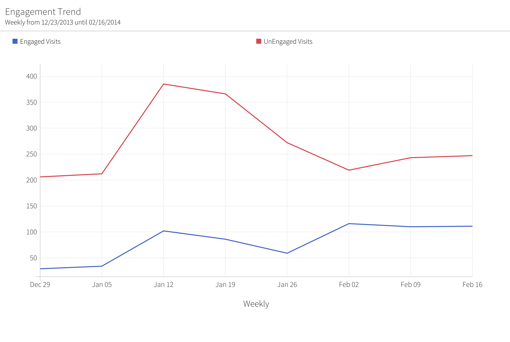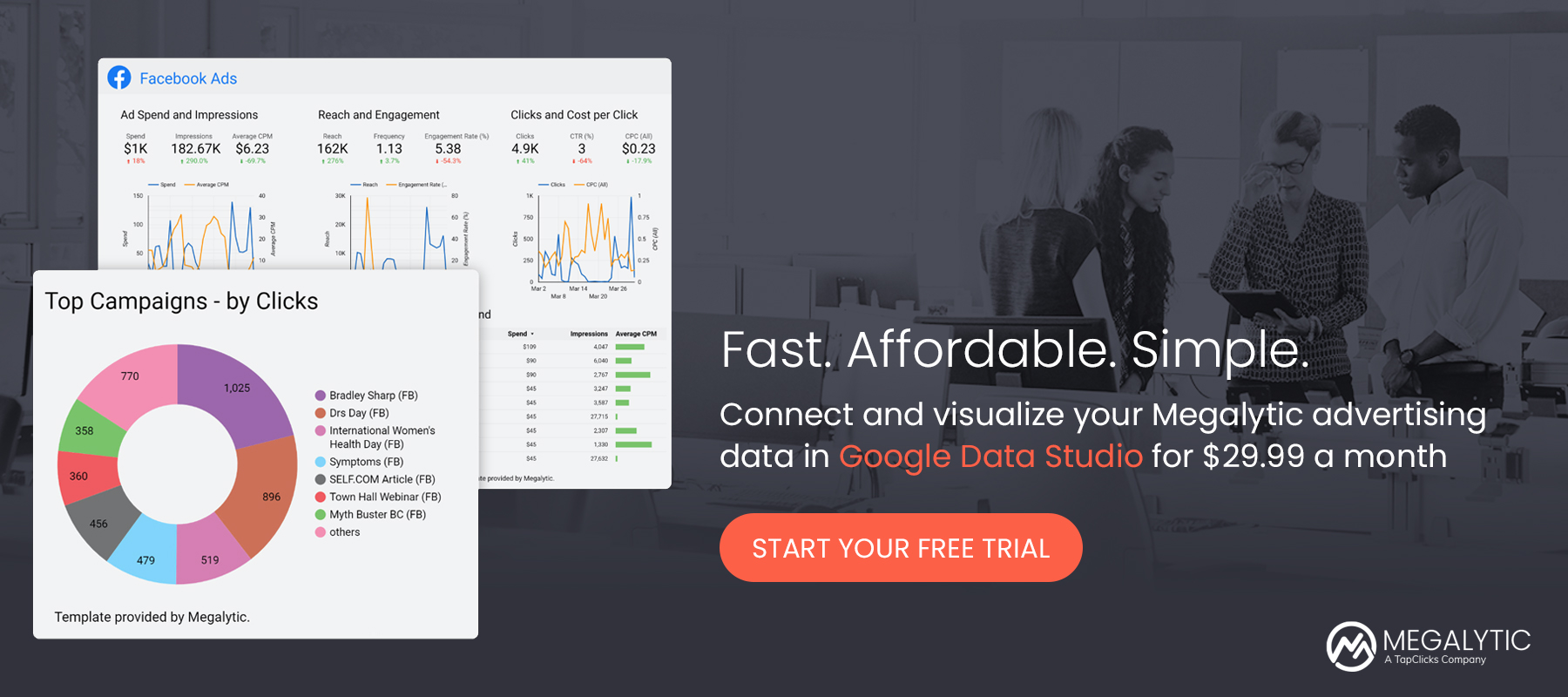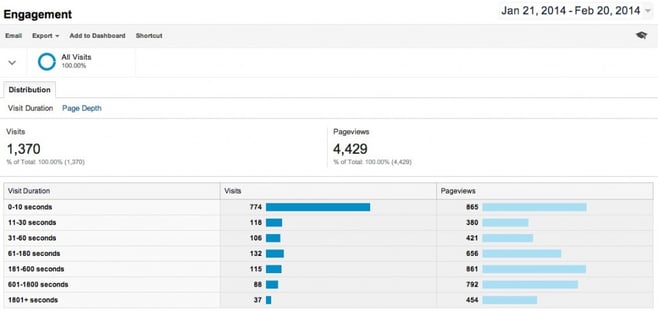Google Analytics provides a variety of metrics for measuring engagement. We have found, however, that the most useful way to view engagement is to look at the trend in the actual number of engaged visits to a site. To make this easy for our customers, Megalytic provides the Engaged Visits and UnEngaged Visits metrics, derived from Google Analytics data.

The Importance of Measuring Engagement
Websites need to be engaging in order to achieve their purpose. And said purpose varies: It may be selling widgets, selling advertising, or providing customer support. Whatever the purpose is, if the website is not engaging, it is probably not achieving it. Ideally, you want to have a stable and growing audience of engaged visitors. So, how do you measure the size of your engaged audience?
Out of the box, Google Analytics provides three metrics that are commonly used as gauges of engagement: Bounce Rate, Pages/Visit, and Avg. Visit Duration. But, since these metrics are averages, they do not measure the size of your engaged audience and can be misleading.
The Limitations of Averages for Measuring Engagement
Metrics like Bounce Rate, Pages/ Visit and Avg. Visit Duration tell you about the average behavior of a visitor. This information can be skewed by the type of marketing campaign happening during a particular period. For example, consider Pages/ Visit, your site average may be 3.92 - so the average visit looks at about 4 pages. Now, suppose that your marketing team manages to get a link to your site placed on a major source of traffic - like Reddit. You will see a surge in traffic - but many of those visits will be to only one page - the page linked to from Reddit. So, your Pages/ Visit may drop to 2.05. Does that mean that your site is attracting fewer engaged visitors? Absolutely not! In fact, the size of your engaged audience is probably increasing because some number of the new visitors from Reddit are engaged by your site.
A Better Approach - Count the Number of Engaged Visits
So, what you would really like to do is calculate the number of engaged visits to your site. You can get some sense of that from the Google Analytics Engagement report which segments visits by Visit Duration.
Let's say that you define an engaged visit as one that lasts more than 3 minutes (180 seconds). Looking at the above report, you can add up those visits and see that you had: 115 + 88 + 37 = 240 engaged visits during the last month. That means that 240 / 1370 = 17.5% of your visits were engaged. That's good to know. Now, you want to track how that number changes over time. Is 240 engaged visits per month more or less than we had last week?
You probably also want to know if those engaged visits are coming from a particular segment, so you can focus your marketing activities there. Unfortunately, Google Analytics does not make it easy for you to calculate this number and track it over time. That is why we built the Engaged Visits metric into Megalytic.
Using Megalytic's Engaged Visits Metric
Megalytic pulls data from Google Analytics and processes it to calculate the Engaged Visits metric. We use the same dimension as in Google's Engagement Report - Visit Duration (ga:visitLength), loop through all the visits and count those that exceed your threshold definition of engagement. In the example above, we used the threshold of 180 seconds to calculate 240 engaged visits. Changing this threshold will change the result.
In Megalytic, you can define the threshold that makes sense for your site. We also enable you to use our Engaged Visits metric in charts and tables, so you can track how it changes over time. The chart above is an example showing the change in Engaged Visits and UnEngaged Visits over time.
Get Started Measuring Engaged Visits
Detailed instructions for how to use the Engaged Visits metric in Megalytic can be found here.



